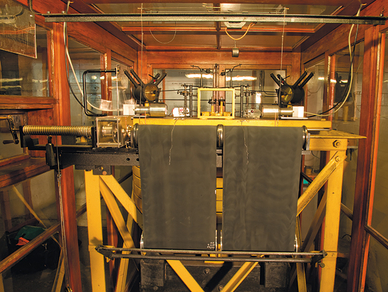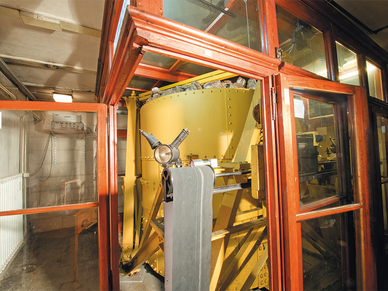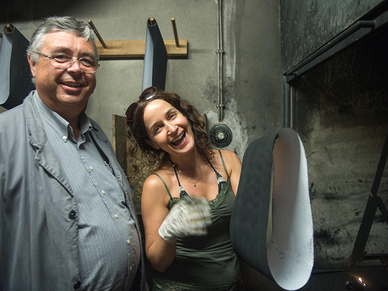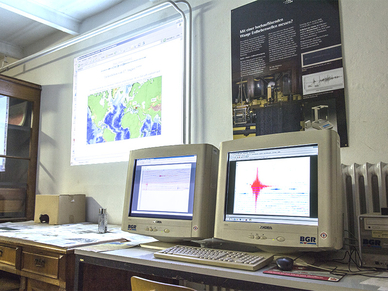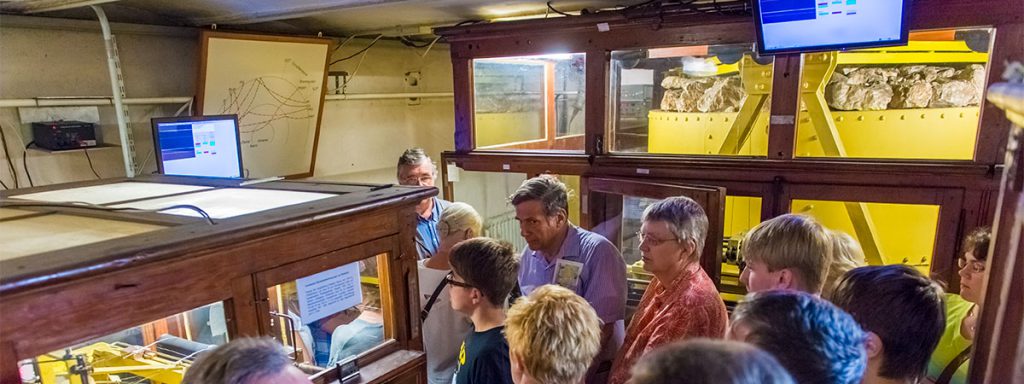
Measuring instruments
historical and modern seismographs – where does the smoked paper come from?
Measuring instruments
The Wiechert Earthquake Station Göttingen currently performs seismic measurements using both the modern broadband seismograph STS-2 and – with equally reliable results – the historical instruments from more than 100 years ago.
The Old Earthquake Vault houses the
Astatic horizontal seismograph
The instrument installed here has been continuously recording seismic movements since 1902, with just a few interruptions due to maintenance work. It is the prototype for similar instruments which set the standard for many observatories (more than 150 worldwide) over decades and are described in detail in classic textbooks of seismology. continue
17-tonne pendulum
The mass of this short-period horizontal seismograph weighing 17,000 kg consists of an iron bucket filled with many tonnes of barite. It is suspended on three holders of a scaffolding structure standing on the ground. The sophisticated mechanism makes this instrument so sensitive that a needle movement can already be triggered by directing a strong breath of air at the iron bucket. continue
Vertical seismograph
The seismograph was built between 1904 and 1905 in Göttingen. Since then, the instrument has been recording seismic movements at a writing speed of 60 mm/min virtually without any interruptions. Just like the astatic pendulum, it is the prototype for similar instruments at many observatories. continue
The instruments from the workshops of G. Bartels and Spindler & Hoyer, Göttingen, set the gold standard worldwide from the outset to the 1960s! Only the electronic measuring instruments eclipsed the significance of the mechanical instruments. Yet, the historical measuring instruments still deliver – precise and reliable – results on a daily basis.
Production of smoked paper
The “data carrier” for the recordings of the historical seismographs is smoked paper. Since smoked paper is not commercially available, we produce it ourselves. continue
Modern seismograph
The STS-2 broadband seismometer developed by Wielandt/Streckeisen is the standard seismometer used at the GRSN stations (GRSN = German Regional Seismic Network). It consists of three identical sensors that are arranged at an angle of 120°. continue



